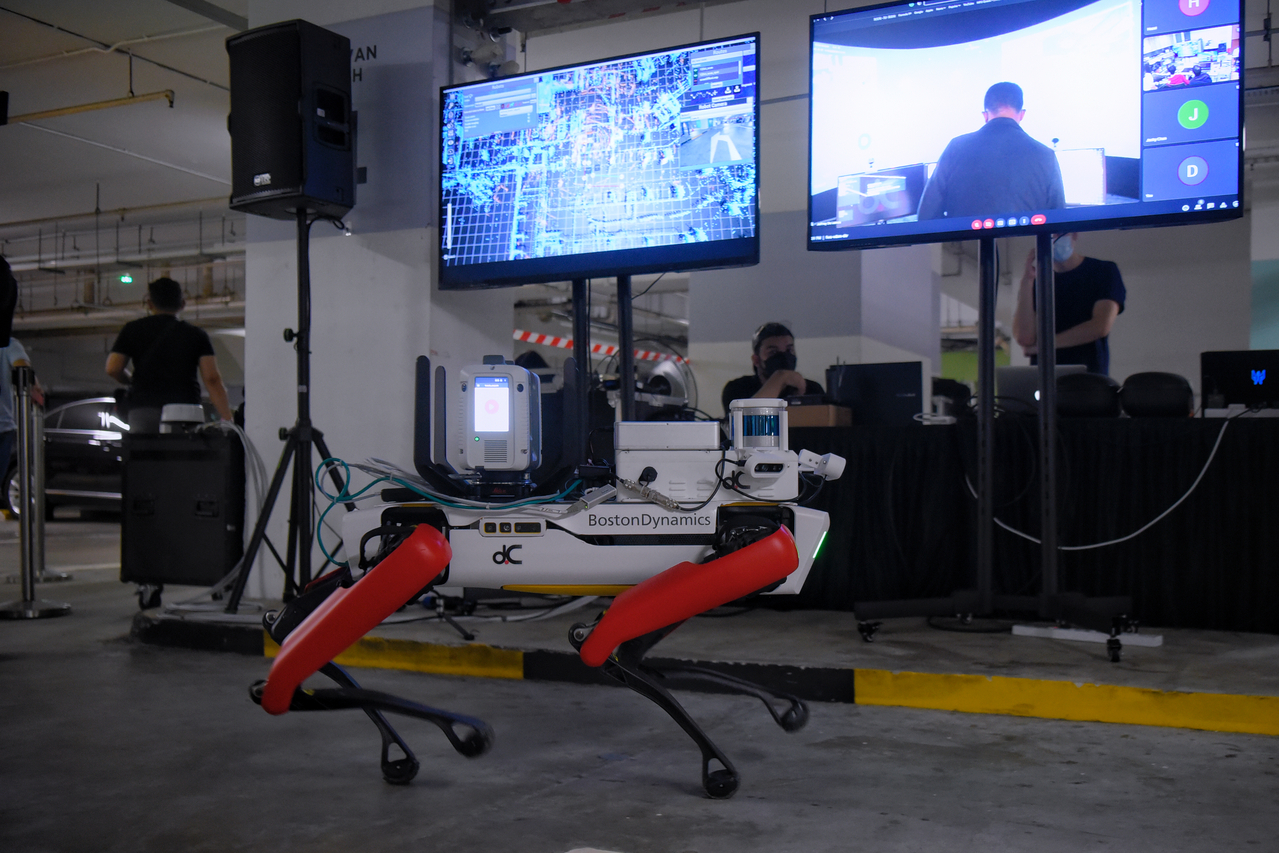Robot dog Spot finds new work: Scanning worksites, sending results over 5G
Sign up now: Get ST's newsletters delivered to your inbox

Spot the robot dog's new line of work is being tested as part of several 5G applications the Government is trialling in Sentosa.
ST PHOTO: MARK CHEONG
Kenny Chee
Follow topic:
SINGAPORE - After a stint at a park last year in which it reminded visitors on safe distancing, Spot the robot dog has a new assignment - helping to do laser scans of structures built at worksites and sending the results over 5G for checks.
The four-legged Boston Dynamics machine's new line of work is being tested by the Building and Construction Authority (BCA) and construction firm Gammon as part of several 5G applications the Government is trialling in Sentosa.
The 5G @ Sentosa project was launched by the Government Technology Agency (GovTech) on Tuesday (Oct 19). The aim is to roll out the successful Sentosa 5G trials to the mainland in the next five years.
Using 5G, the worksite scans made by the laser scanner equipped on Spot can be sent almost instantly, without lag, to building supervisors located elsewhere to check if the structures there are built according to their intended designs.
This is done by comparing the scan data with 3D models created earlier of what the completed structures should look like.
Such remote checking is useful during the Covid-19 pandemic if there are restrictions on people moving around worksites, for example.
Previously, the scans were done manually, which was resource-intensive and time-consuming. The scan data is also too large to be sent over the air through 4G.
But Spot, which was deployed at the Bishan-Ang Mo Kio Park in a pilot as a safe distancing robot in May last year, can be programmed to tirelessly scan worksites on its own.
The robot canine's work could also be extended to track the progress of and do quality control checks on construction projects. An alternative to Spot is a wheeled robot that performs a similar function.
Another project being tested by BCA and Gammon involves guiding worksite staff and helping them to better visualise installation works at a construction site using augmented reality.
This is done by having staff wear headsets with visors and superimposing digital models of structures to be installed over what employees see at the worksite in person.
The digital overlay allows users to align actual structures at the worksite more accurately during their installation.
This operation needs very low latency and high bandwidth to stream the overlays accurately in real time, which 5G can support. Current 4G networks are not suitable for this.
Using the digital overlay has safety benefits too, as it also allows worksite staff to do a digital rehearsal of an installation before it actually happens, so any issues that surface can be identified early.
5G is also being tested by the National Environment Agency and Nanyang Technological University (NTU) to remotely control a driverless road sweeper in Sentosa during an emergency.
Tests have shown that the vehicle can be operated from NTU, which is about 20km from Sentosa.
The teleoperation system that an operator uses to control the road sweeper looks like a driving simulator and creates the illusion that he is sitting in the actual vehicle in Sentosa, as it receives data such as videos and sounds sent over 5G from the sweeper's sensors.
So, when he helps to navigate, such as when the vehicle encounters tricky road or weather conditions, he can react quickly since he can see the area in front of the road sweeper, hear sounds near it and even feel it going over humps on the road.


